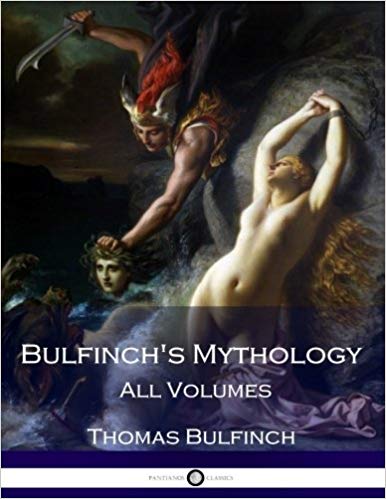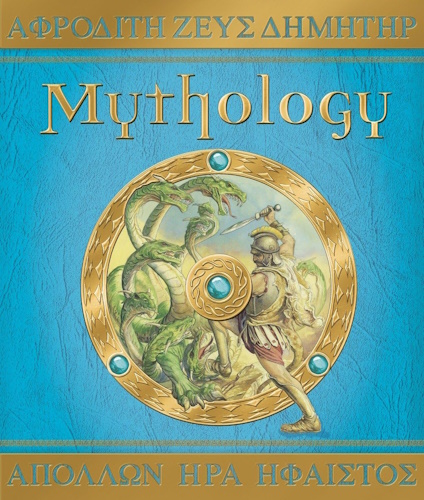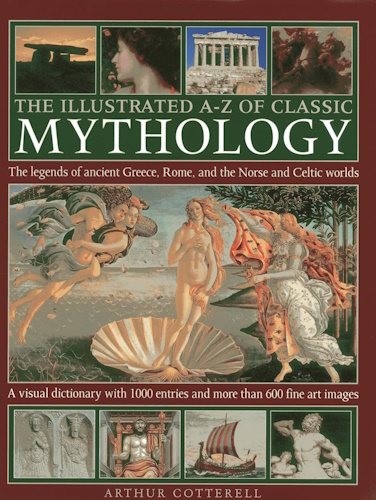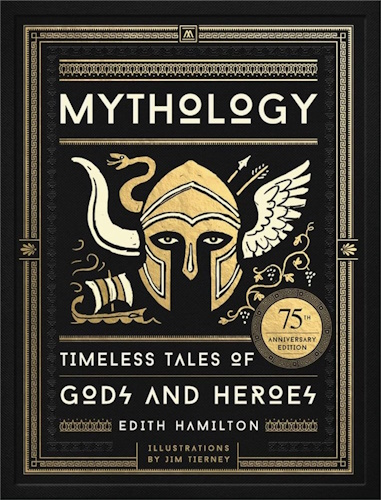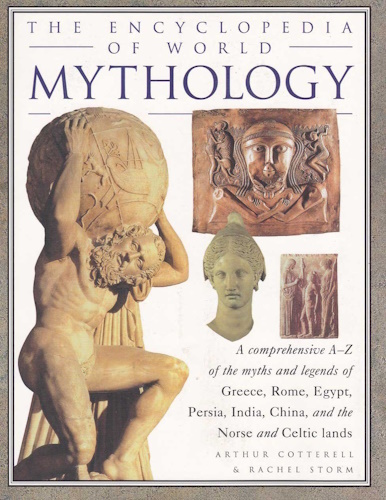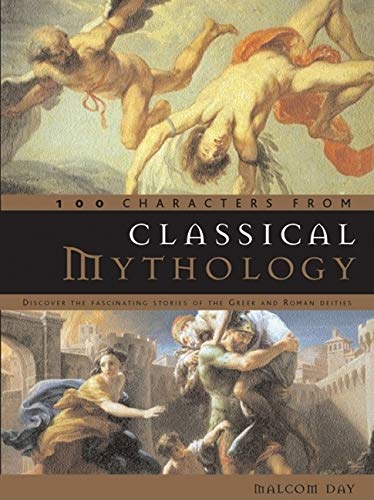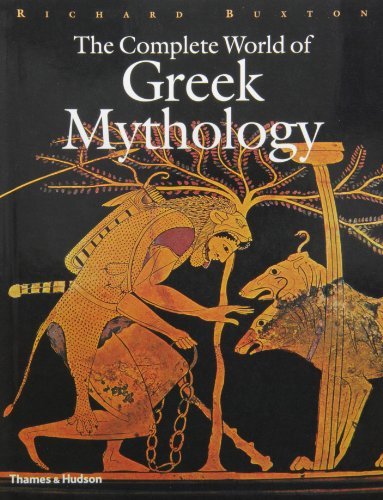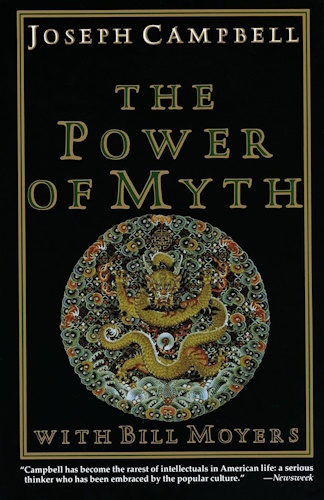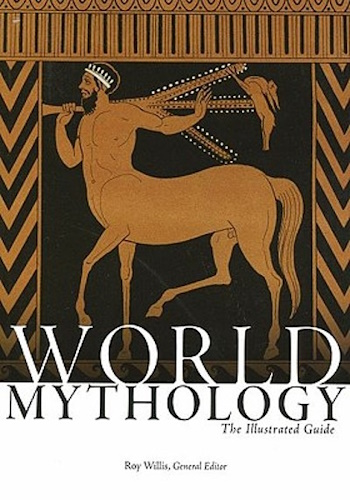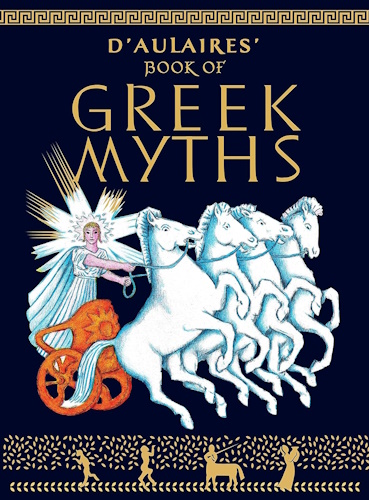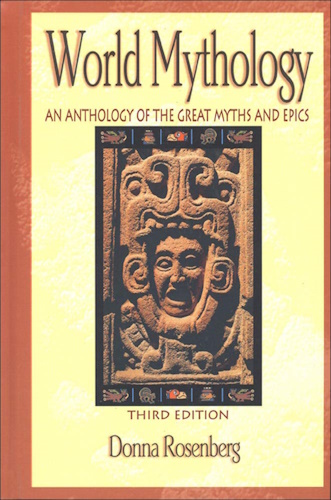
![]()
![]()
CHAPTER XXII.
THE RURAL DEITIES- ERISICHTHON- RHOECUS- THE
WATER DEITIES- THE CAMENAE- THE WINDS.
THE RURAL DEITIES.
PAN, the god of woods and fields, of flocks and shepherds, dwelt in grottos, wandered on the mountains and in valleys, and amused himself with the chase or in leading the dances of the nymphs. He was fond of music, and was, as we have seen, the inventor of the syrinx, or shepherd's pipe, which he himself played in a masterly manner. Pan, like other gods who dwelt in forests, was dreaded by those whose occupations caused them to pass through the woods by night, for the gloom and loneliness of such scenes dispose the mind to superstitious fears. Hence sudden fright without any visible cause was ascribed to Pan, and called a Panic terror.
As the name of the god signifies all, Pan came to be considered a symbol of the universe and personification of Nature; and later still to be regarded as a representative of all the gods and of heathenism itself.
Sylvanus and Faunus were Latin divinities, whose characteristics are so nearly the same as those of Pan that we may safely consider them as the same personage under different names.
The wood-nymphs, Pan's partners in the dance, were but one class of nymphs. There were besides them the Naiads, who presided over brooks and fountains, the Oreads, nymphs of mountains and grottos, and the Nereids, sea-nymphs. The three last named were immortal, but the wood-nymphs, called Dryads or Hamadryads, were believed to perish with the trees which had been their abode and with which they had come into existence. It was therefore an impious act wantonly to destroy a tree, and in some aggravated cases was severely punished, as in the instance of Erisichthon, which we are about to record.
Milton in his glowing description of the early creation, thus alludes to Pan as the personification of Nature:
"...Universal Pan,Knit with the Graces and the Hours in dance,
Led on the eternal spring."
And describing Eve's abode:
"...In shadier bower,More sacred or sequestered, though but feigned,
Pan or Sylvanus never slept, nor nymph
Nor Faunus haunted."
Paradise Lost, B. IV.
It was a pleasing trait in the old Paganism that it loved to trace in every operation of nature the agency of deity. The imagination nation of the Greeks peopled all the regions of earth and sea with divinities, to whose agency it attributed those phenomena which our philosophy ascribes to the operation of the laws of nature. Sometimes in our poetical moods we feel disposed to regret the change, and to think that the heart has lost as much as the head has gained by the substitution. The poet Wordsworth thus strongly expresses this sentiment:
"...Great God, I'd rather beA Pagan, suckled in a creed outworn,
So might I, standing on this pleasant lea,
Have glimpses that would make me less forlorn;
Have sight of Proteus rising from the sea
And hear old Triton blow his wreathed horn."
Schiller, in his poem "Die Gotter Griechenlands," expresses his regret for the overthrow of the beautiful mythology of ancient times in a way which has called forth an answer from a Christian poet, Mrs. E. Barrett Browning, in her poem called "The Dead Pan." The two following verses are a specimen:
"By your beauty which confessesSome chief Beauty conquering you,
By our grand heroic guesses
Through your falsehood at the True,
We will weep not! earth shall roll
Heir to each god's aureole,
And Pan is dead.
"Earth outgrows the mythic fancies
Sung beside her in her youth;
And those debonaire romances
Sound but dull beside the truth.
Phoebus' chariot course is run!
Look up, poets, to the sun!
Pan, Pan is dead."
These lines are founded on an early Christian tradition that when the heavenly host told the shepherds at Bethlehem of the birth of Christ, a deep groan, heard through all the isles of Greece, told that the great Pan was dead, and that all the royalty of Olympus was dethroned and the several deities were sent wandering in cold and darkness. So Milton in his "Hymn on the Nativity":
"The lonely mountains o'erAnd the resounding shore,
A voice of weeping heard and loud lament;
From haunted spring and dale,
Edged with poplar pale,
The parting Genius is with sighing sent:
With flower-enwoven tresses torn,
The nymphs in twilight shade of tangled thickets mourn."
ERISICHTHON.
Erisichthon was a profane person and a despiser of the gods, On one occasion he presumed to violate with the axe a grove sacred to Ceres. There stood in this grove a venerable oak, so large that it seemed a wood in itself, its ancient trunk towering aloft, whereon votive garlands were often hung and inscriptions carved expressing the gratitude of suppliants to the nymph of the tree. Often had the Dryads danced round it hand in hand. Its trunk measured fifteen cubits round, and it overtopped the other trees as they overtopped the shrubbery. But for all that, Erisichthon saw no reason why he should spare it and he ordered his servants to cut it down. When he saw them hesitate he snatched an axe from one, and thus impiously exclaimed: "I care not whether it be a tree beloved of the goddess or not; were it the goddess herself it should come down if it stood in my way." So saying, he lifted the axe and the oak seemed to shudder and utter a groan. When the first blow fell upon the trunk blood flowed from the wound. All the bystanders were horror-struck, and one of them ventured to remonstrate and hold back the fatal axe. Erisichthon, with a scornful look, said to him, "Receive the reward of your piety;" and turned against him the weapon which he had held aside from the tree, gashed his body with many wounds, and cut off his head. Then from the midst of the oak came a voice, "I who dwell in this tree am a nymph beloved of Ceres, and dying by your hands forewarn you that punishment awaits you." He desisted not from his crime, and at last the tree, sundered by repeated blows and drawn by ropes, fell with a crash and prostrated a great part of the grove in its fall.
The Dryads, in dismay at the loss of their companion and at seeing the pride of the forest laid low, went in a body to Ceres, all clad in garments of mourning, and invoked punishment upon Erisichthon. She nodded her assent, and as she bowed her head the grain ripe for harvest in the laden fields bowed also. She planned a punishment so dire that one would pity him, if such a culprit as he could be pitied- to deliver him over to Famine. As Ceres herself could not approach Famine, for the Fates have ordained that these two goddesses shall never come together, she called an Oread from her mountain and spoke to her in these words: "There is a place in the farthest part of ice-clad Scythia, a sad and sterile region without trees and without crops. Cold dwells there, and Fear and Shuddering, and Famine. Go and tell the last to take possession of the bowels of Erisichthon. Let not abundance subdue her, nor the power of my gifts drive her away. Be not alarmed at the distance" (for Famine dwells very far from Ceres), "but take my chariot. The dragons are fleet and obey the rein, and will take you through the air in a short time." So she gave her the reins, and she drove away and soon reached Scythia. On arriving at Mount Caucasus she stopped the dragons and found Famine in a stony field, pulling up with teeth and claws the scanty herbage. Her hair was rough, her eyes sunk, her face pale, her lips blanched, her jaws covered with dust, and her skin drawn tight, so as to show all her bones. As the Oread saw her afar off (for she did not dare to come near), she delivered the commands of Ceres; and, though she stopped as short a time as possible, and kept her distance as well as she could, yet she began to feel hungry, and turned the dragons' heads and drove back to Thessaly.
Famine obeyed the commands of Ceres and sped through the air to the dwelling of Erisichthon, entered the bedchamber of the guilty man, and found him asleep. She enfolded him with her wings and breathed herself into him, infusing her poison into his veins. Having discharged her task, she hastened to leave the land of plenty and returned to her accustomed haunts. Erisichthon still slept, and in his dreams craved food, and moved his jaws as if eating. When he awoke, his hunger was raging. Without a moment's delay he would have food set before him, of whatever kind earth, sea, or air produces; and complained of hunger even while he ate. What would have sufficed for a city or a nation, was not enough for him. The more he ate the more he craved. His hunger was like the sea, which receives all the rivers, yet is never filled; or like fire, that burns all the fuel that is heaped upon it, yet is still voracious for more.
His property rapidly diminished under the unceasing demands of his appetite, but his hunger continued unabated. At length he had spent all and had only his daughter left, a daughter worthy of a better parent. Her too he sold. She scorned to be a slave of a purchaser and as she stood by the seaside raised her hands in prayer to Neptune. He heard her prayer, and though her new master was not far off and had his eye upon her a moment before, Neptune changed her form and made her assume that of a fisherman busy at his occupation. Her master, looking for her and seeing her in her altered form, addressed her and said, "Good fisherman, whither went the maiden whom I saw just now, with hair dishevelled and in humble garb, standing about where you stand? Tell me truly; so may your luck be good and not a fish nibble at your hook and get away." She perceived that her prayer was answered and rejoiced inwardly at hearing herself inquired of about herself. She replied, "Pardon me, stranger, but I have been so intent upon my line that I have seen nothing else; but I wish I may never catch another fish if I believe any woman or other person except myself to have been hereabouts for some time." He was deceived and went his way, thinking his slave had escaped. Then she resumed her own form. Her father was well pleased to find her still with him, and the money too that he got by the sale of her; so he sold her again. But she was changed by the favour of Neptune as often as she was sold, now into a horse, now a bird, now an ox, and now a stag- got away from her purchasers and came home. By this base method the starving father procured food; but not enough for his wants, and at last hunger compelled him to devour his limbs, and he strove to nourish his body by eating his body, till death relieved him from the vengeance of Ceres.
RHOECUS.
The Hamadryads could appreciate services as well as punish injuries. The story of Rhoecus proves this. Rhoecus, happening to see an oak just ready to fall, ordered his servants to prop it up. The nymph, who had been on the point of perishing with the tree, came and expressed her gratitude to him for having saved her life and bade him ask what reward he would. Rhoecus boldly asked her love and the nymph yielded to his desire. She at the same time charged him to be constant and told him that a bee should be her messenger and let him know when she would admit his society. One time the bee came to Rhoecus when he was playing at draughts and he carelessly brushed it away. This so incensed the nymph that she deprived him of sight.
Our countryman, J. R. Lowell, has taken this story for the subject of one of his shorter poems. He introduces it thus:
"Hear now this fairy legend of old Greece,As full of freedom, youth and beauty still,
As the immortal freshness of that grace
Carved for all ages on some Attic frieze."
THE WATER DEITIES.
Oceanus and Tethys were the Titans who ruled over the watery elements. When Jove and his brothers overthrew the Titans and assumed their power, Neptune and Amphitrite succeeded to the dominion of the waters in place of Oceanus and Tethys.
NEPTUNE.
Neptune was the chief of the water deities. The symbol of his power was the trident, or spear with three points, with which he used to shatter rocks, to call forth or subdue storms, to shake the shores and the like. He created the horse and was the patron of horse races. His own horses had brazen hoofs and golden manes. They drew his chariot over the sea, which became smooth before him, while the monsters of the deep gambolled about his path.
AMPHITRITE.
Amphitrite was the wife of Neptune. She was the daughter of Nereus and Doris, and the mother of Triton. Neptune, to pay his court to Amphitrite, came riding on a dolphin. Having won her he rewarded the dolphin by placing him among the stars.
NEREUS AND DORIS.
Nereus and Doris were the parents of the Nereids, the most celebrated of whom were Amphitrite, Thetis, the mother of Achilles, and Galatea, who was loved by the Cyclops Polyphemus: Nereus was distinguished for his knowledge and his love of truth and justice, whence he was termed an elder; the gift of prophecy was also assigned to him.
TRITON AND PROTEUS.
Triton was the son of Neptune and Amphitrite, and the poets made him his father's trumpeter. Proteus was also a son of Neptune. He, like Nereus, is styled a sea-elder for his wisdom and knowledge of future events. His peculiar power was that of changing his shape at will.
THETIS.
Thetis, the daughter of Nereus and Doris, was so beautiful that Jupiter himself sought her in marriage; but having learned from Prometheus the Titan that Thetis should bear a son who should be greater than his father, Jupiter desisted from his suit and decreed that Thetis should be the wife of a mortal. By the aid of Chiron the Centaur, Peleus succeeded in winning the goddess for his bride and their son was the renowned Achilles. In our chapter on the Trojan war it will appear that Thetis was a faithful mother to him, aiding him in all difficulties, and watching over his interests from the first to the last.
LEUCOTHEA AND PALAEMON.
Ino, the daughter of Cadmus and wife of Athamas, flying from her frantic husband with her little son Melicertes in her arms, sprang from a cliff into the sea. The gods, out of compassion, make her a goddess of the sea, under the name of Leucothea, and him a god, under that of Palaemon. Both were held powerful to save from shipwreck and were invoked by sailors. Palaemon was usually represented riding on a dolphin. The Isthmian games were celebrated in his honour. He was called Portunus by the Romans, and believed to have jurisdiction of the ports and shores.
Milton alludes to all these deities in the song at the conclusion of "Comus":
"Sabrina fair...Listen and appear to us,
In name of great Oceanus;
By the earth-shaking Neptune's mace,
And Tethys' grave, majestic pace;
By hoary Nereus' wrinkled look,
And the Carpathian wizard's hook,*
By scaly Triton's winding shell,
And old soothsaying Glaucus' spell,
By Leucothea's lovely hands,
And her son who rules the strands;
By Thetis' tinsel-slippered feet,
And the songs of Sirens sweet;" etc.
* Proteus.
Armstrong, the poet of the "Art of Preserving Health," under the inspiration of Hygeia, the goddess of health, thus celebrates the Naiads. Paeon is a name both of Apollo and AEsculapius.
"Come ye Naiads! to the fountains lead!Propitious maids! the task remains to sing
Your gifts (so Paeon, so the powers of Health
Command), to praise your crystal element.
O comfortable streams! with eager lips
And trembling hands the languid thirsty quaff
New life in you; fresh vigour fills their veins.
No warmer cups the rural ages knew,
None warmer sought the sires of humankind;
Happy in temperate peace their equal days
Felt not the alternate fits of feverish mirth
And sick dejection; still serene and pleased,
Blessed with divine immunity from ills,
Long centuries they lived; their only fate
Was ripe old age, and rather sleep than death."
THE CAMENAE.
By this name the Latins designated the Muses, but included under it also some other deities, principally nymphs of fountains. Egeria was one of them, whose fountain and grotto are still shown. It was said that Numa, the second king of Rome, was favoured by this nymph with secret interviews, in which she taught him those lessons of wisdom and of law which he embodied in the institutions of his rising nation. After the death of Numa the nymph pined away and was changed into a fountain.
Byron, in "Childe Harold," Canto IV., thus alludes to Egeria and her grotto:
"Here didst thou dwell, in this enchanted cover,Egeria! all thy heavenly bosom beating
For the far footsteps of thy mortal lover;
The purple midnight veiled that mystic meeting
With her most starry canopy;" etc.
Tennyson, also, in his "Palace of Art," gives us a glimpse of the royal lover expecting the interview:
"Holding one hand against his ear,To list a footfall ere he saw
The wood-nymph, stayed the Tuscan king to hear
Of wisdom and of law."
THE WINDS.
When so many less active agencies were personified, it is not to be supposed that the winds failed to be so. They were Boreas or Aquilo, the north wind; Zephyrus or Favonius, the west; Notus or Auster, the south; and Eurus, the east. The first two have been chiefly celebrated by the poets, the former as the type of rudeness, the latter of gentleness. Boreas loved the nymph Orithyia, and tried to play the lover's part, but met with poor success. It was hard for him to breathe gently, and sighing was out of the question. Weary at last of fruitless endeavours, he acted out his true character, seized the maiden and carried her off. Their children were Zetes and Calais, winged warriors, who accompanied the Argonautic expedition, and did good service in an encounter with those monstrous birds the Harpies.
Zephyrus was the lover of Flora. Milton alludes to them in "Paradise Lost," where he describes Adam waking and contemplating Eve still asleep.
"...He on his sideLeaning half raised, with looks of cordial love,
Hung over her enamoured, and beheld
Beauty which; whether waking or asleep,
Shot forth peculiar graces; then with voice,
Mild as when Zephyrus on Flora breathes,
Her hand soft touching, whispered thus: 'Awake!
My fairest, my espoused, my latest found,
Heaven's last, best gift, my ever-new delight.'"
Dr. Young, the poet of the "Night Thoughts," addressing the idle and luxurious, says:
"Ye delicate! who nothing can support(Yourselves most insupportable) for whom
The winter rose must blow,...
....and silky soft
Favonius breathe still softer or be chid!"
-
Urantia Book, 44:0.11 - The Celestial Artisans
Never in your long ascendancy will you lose the power to recognize your associates of former existences. Always, as you ascend inward in the scale of life, will you retain the ability to recognize and fraternize with the fellow beings of your previous and lower levels of experience. Each new translation or resurrection will add one more group of spirit beings to your vision range without in the least depriving you of the ability to recognize your friends and fellows of former estates.
-
Princess Bride 1987 Wallace Shawn (Vizzini) and Mandy Patinkin (Inigo Montoya)
Vizzini: HE DIDN'T FALL? INCONCEIVABLE.
Inigo Montoya: You keep using that word. I do not think it means what you think it means. -
Urantia Book, 117:4.14 - The Finite God
And here is mystery: The more closely man approaches God through love, the greater the reality -- actuality -- of that man. The more man withdraws from God, the more nearly he approaches nonreality -- cessation of existence. When man consecrates his will to the doing of the Father's will, when man gives God all that he has, then does God make that man more than he is.
-
Urantia Book, 167:7.4 - The Talk About Angels
"And do you not remember that I said to you once before that, if you had your spiritual eyes anointed, you would then see the heavens opened and behold the angels of God ascending and descending? It is by the ministry of the angels that one world may be kept in touch with other worlds, for have I not repeatedly told you that I have other sheep not of this fold?"
-
Urantia Book, Foreword - 0:12.12 - The Trinities
But we know that there dwells within the human mind a fragment of God, and that there sojourns with the human soul the Spirit of Truth; and we further know that these spirit forces conspire to enable material man to grasp the reality of spiritual values and to comprehend the philosophy of universe meanings. But even more certainly we know that these spirits of the Divine Presence are able to assist man in the spiritual appropriation of all truth contributory to the enhancement of the ever-progressing reality of personal religious experience—God-consciousness.
-
Urantia Book, 1:4.3 - The Mystery Of God
When you are through down here, when your course has been run in temporary form on earth, when your trial trip in the flesh is finished, when the dust that composes the mortal tabernacle "returns to the earth whence it came"; then, it is revealed, the indwelling "Spirit shall return to God who gave it." There sojourns within each moral being of this planet a fragment of God, a part and parcel of divinity. It is not yet yours by right of possession, but it is designedly intended to be one with you if you survive the mortal existence.
-
Urantia Book, 1:4.1 - The Mystery Of God
And the greatest of all the unfathomable mysteries of God is the phenomenon of the divine indwelling of mortal minds. The manner in which the Universal Father sojourns with the creatures of time is the most profound of all universe mysteries; the divine presence in the mind of man is the mystery of mysteries.
-
Urantia Book, 1:4.6 - The Mystery Of God
To every spirit being and to every mortal creature in every sphere and on every world of the universe of universes, the Universal Father reveals all of his gracious and divine self that can be discerned or comprehended by such spirit beings and by such mortal creatures. God is no respecter of persons, either spiritual or material. The divine presence which any child of the universe enjoys at any given moment is limited only by the capacity of such a creature to receive and to discern the spirit actualities of the supermaterial world.
-
Urantia Book, 11:0.1 - The Eternal Isle Of Paradise
Paradise is the eternal center of the universe of universes and the abiding place of the Universal Father, the Eternal Son, the Infinite Spirit, and their divine co-ordinates and associates. This central Isle is the most gigantic organized body of cosmic reality in all the master universe. Paradise is a material sphere as well as a spiritual abode. All of the intelligent creation of the Universal Father is domiciled on material abodes; hence must the absolute controlling center also be material, literal. And again it should be reiterated that spirit things and spiritual beings are real.
-
Urantia Book, 50:6.4 - Planetary Culture
Culture presupposes quality of mind; culture cannot be enhanced unless mind is elevated. Superior intellect will seek a noble culture and find some way to attain such a goal. Inferior minds will spurn the highest culture even when presented to them ready-made.
-
Urantia Book, 54:1.6 - True And False Liberty
True liberty is the associate of genuine self-respect; false liberty is the consort of self-admiration. True liberty is the fruit of self-control; false liberty, the assumption of self-assertion. Self-control leads to altruistic service; self-admiration tends towards the exploitation of others for the selfish aggrandizement of such a mistaken individual as is willing to sacrifice righteous attainment for the sake of possessing unjust power over his fellow beings.
-
Urantia Book, 54:1.9 - True And False Liberty
How dare the self-willed creature encroach upon the rights of his fellows in the name of personal liberty when the Supreme Rulers of the universe stand back in merciful respect for these prerogatives of will and potentials of personality! No being, in the exercise of his supposed personal liberty, has a right to deprive any other being of those privileges of existence conferred by the Creators and duly respected by all their loyal associates, subordinates, and subjects.
-
Urantia Book, 54:1.8 - True And False Liberty
There is no error greater than that species of self-deception which leads intelligent beings to crave the exercise of power over other beings for the purpose of depriving these persons of their natural liberties. The golden rule of human fairness cries out against all such fraud, unfairness, selfishness, and unrighteousness.
